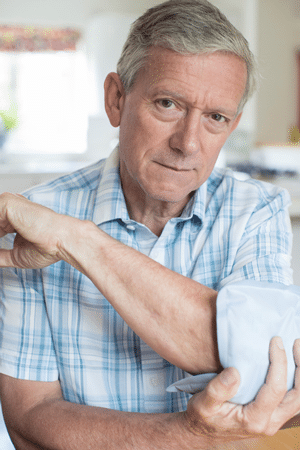There are questions which have challenged the limits of human intellect since the dawn of man… Which came first, the chicken or the egg? What is the meaning of life? Are we alone in the universe?
Here’s one that’s more in our wheelhouse: What’s the best way to relieve muscle soreness? Is it ice, or is it heat?
Ice is the first choice for pro athletes. NBA players routinely ice their knees. MLB pitchers almost always ice their elbows and shoulders after a game. NFL players are known to take full-body ice baths after practices and games.
For these reasons alone, ice is usually the go-to remedy for weekend warriors and average Joes.
But a new study shows that heat—not ice—is the better solution.
Hot or Cold? Science Ends the Debate
Researchers at the Karolinska Institute in Sweden and other universities reviewed evidence showing that most conventional remedies—like ice and electrical nerve stimulation—have little benefit. They also noted that anti-inflammatory painkillers actually slow the ability of muscles to recover from hard exercise.1
So they decided to test the theory that heat could help muscles regain their strength and power. They put young men and women through a grueling arm-pedaling routine designed to exhaust their muscles. Afterward, the volunteers wore arm cuffs.
After one session, their cuffs were heated to about 100 degrees. After another, they were chilled to about 5 degrees. In both cases, they wore the cuffs for two hours and then repeated the most tiring segment of the arm-pedaling routine.
The researchers found that the volunteers’ power output was “markedly better” when their muscles had been warmed than when their muscles had been cooled.
The results were published in the Journal of Physiology. Arthur Cheng, a researcher at the Karolinska Institute, led the study. “Warming muscles probably aids in recovery by augmenting the muscles’ uptake of carbohydrates,” Dr. Cheng says.
“We conclude that skeletal muscle recovery from fatigue induced by endurance exercise is impaired by cooling and improved by heating.”
Heat Beats Aching Muscles
Heat has multiple benefits. It dilates blood vessels, promotes blood flow, and relaxes sore and tight muscles. Improved circulation also helps eliminate lactic acid buildup after exercise.
Based on your personal preference, you can choose between two primary types of heat therapy:
• Dry heat, such as electric heating pads and saunas. Although these draw moisture from the body and may cause dehydration of skin, some people feel that dry heat is the easiest to apply and feels better.
• Moist heat, such as hot baths, steamed towels or moist heating packs. These can help heat penetrate into muscles, and some people feel that moist heat provides better pain relief. If you use a hot bath, try to keep it between 92 and 100 degrees.2
But that’s not the only way for your muscles to get the benefits of heat. Other recommended forms of heat therapy include:
• Using heated-paraffin wax treatments.
• Applying a warm compress or hot water bottle to sore muscles.
Use these remedies for 20 minutes at a time, up to three times per day. Your goal is for the heat to penetrate into your muscles. Simply warming your skin for a few minutes might feel nice…but it won’t actually decrease soreness.
Just be careful if you have diabetes, deep vein thrombosis, dermatitis, peripheral vascular disease, open wounds, or severe cognitive impairment. Heat therapy is generally not advised for these people.3
One more thing… Ice still has its place. If you have an injury that is swollen or bruised, you should still first apply ice to injured areas. Don’t apply heat until the swelling goes down.
Like this Article? Forward this article here or Share on Facebook.
References:
1 https://www.nytimes.com/2017/11/01/well/move/running-a-marathon-think-hot-tub-not-ice-bath-afterward.html
2 https://www.medicalnewstoday.com/articles/29108.php
3 https://www.spine-health.com/treatment/heat-therapy-cold-therapy/how-apply-heat-therapy

